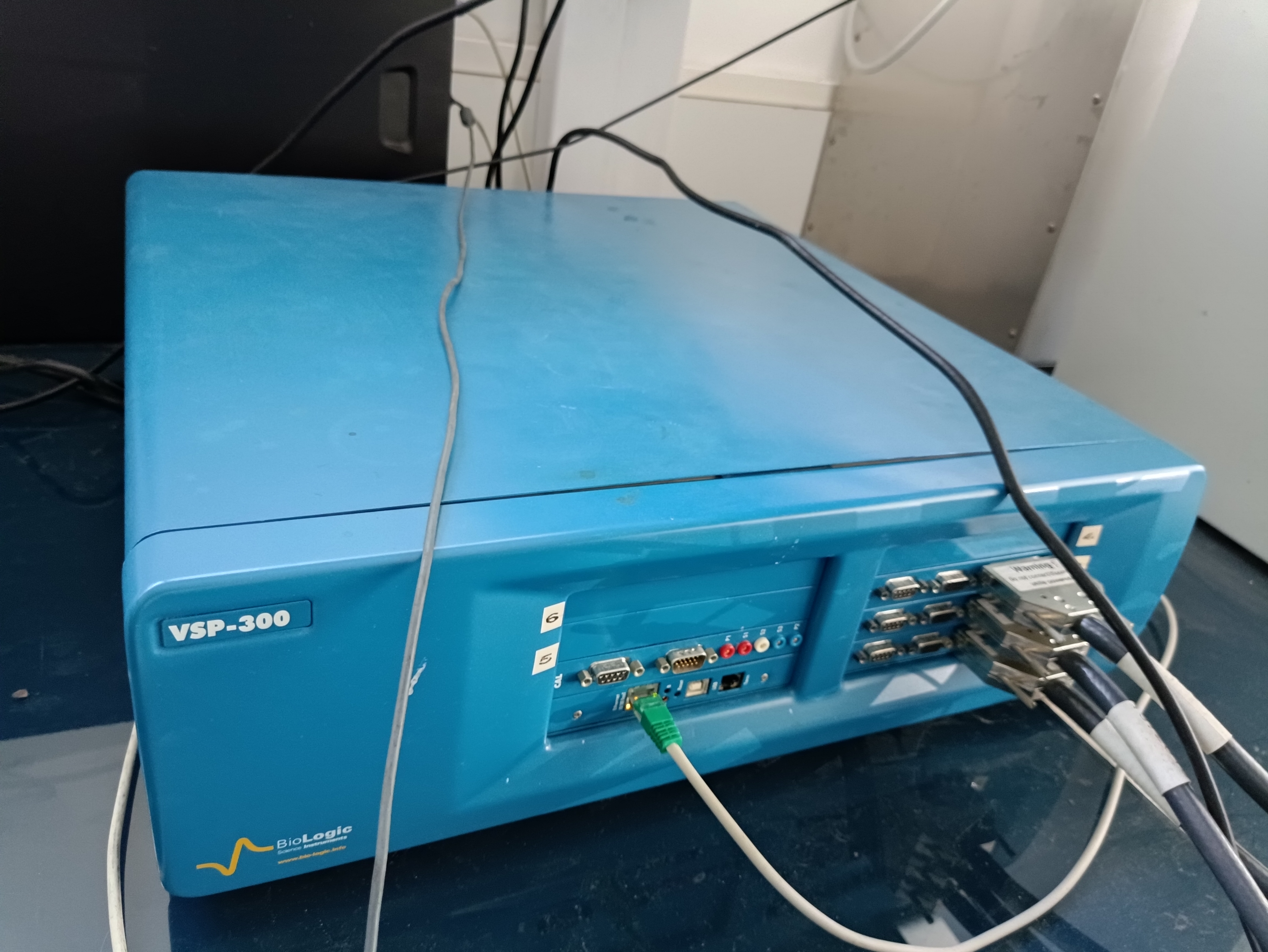Electrochemical workstation (BIOLOGIC - VSP-300)
Theory
An electrochemical workstation is capable of carrying out numerous electrochemical experiments including constant potential and constant current, concurrently. It is used to regulate and monitor several electrochemical reaction parameters, such as potential, current, charge transfer, etc. It typically includes a potentiometer, auxiliary electrode, working electrode, reference electrode, computer, and data collecting software, among other components.
Equipment
Our electrochemical system is composed of a VSP-300 multichannel potentiostat/galvanostat with electrochemical impedance spectroscopy capability (EIS). It includes three controlled independent channels all accommodating an ultra-low current cable.
Measurements can be done in a Faraday cage to reduce electrical interferences.
Gamry paint test cells are also available for testing of coated samples.
Applications
The electrochemical workstation available in the laboratory enables all types of electrochemical measurements to be carried out, whether in stationary or transient conditions: open circuit potential monitoring, potentiodynamic polarization, cyclic voltammetry (CV), EIS measurements…etc.
These electrochemical techniques are mainly dedicated to corrosion studies and for analytical purposes: green corrosion inhibitors, self-healing properties of coatings, long-term protection of painted metals, molecular imprinted and ion imprinted polymers based sensors.
In this example, EIS study of GPTMS/TEOS/TETA hybrid protective coatings based on a simultaneous formation of organic and inorganic networks was carried out. Similar barrier properties but a higher resistance to interfacial delamination was observed for the epoxy rich off-stoichiometric films.
Electrochemical molecularly imprinted polymers in microelectrode devices
In this example the electrochemical properties of electrochemical molecularly imprinted polymers (e-MIPs) to detect bisphenol A pollutant were characterized in organic/aqueous media by CV before their patterned on microelectrode.



